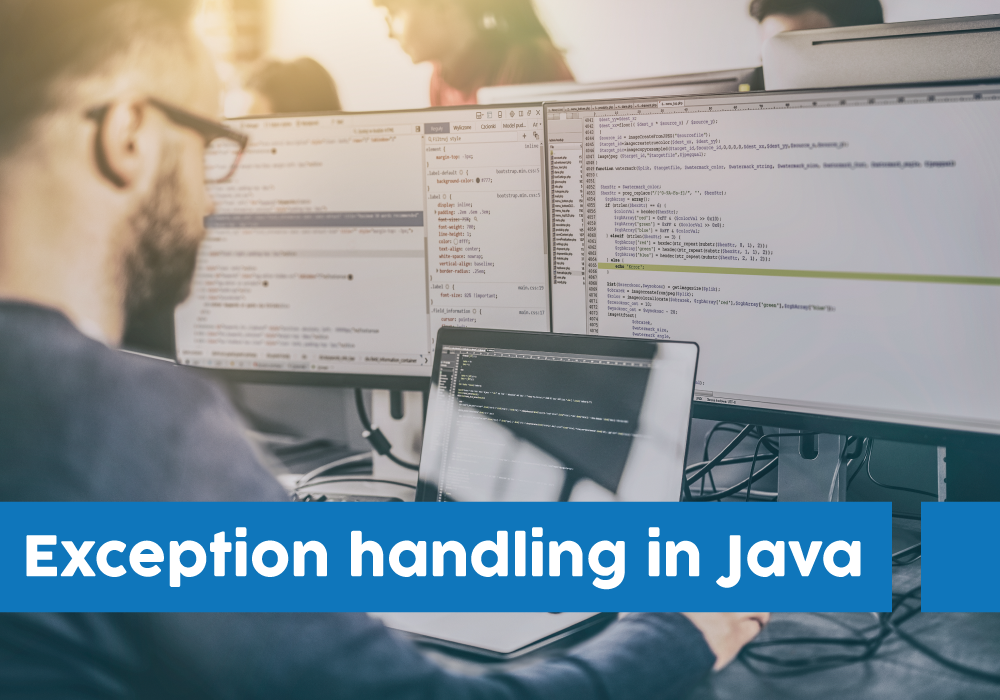Introduction
Java, a widely-used high-level, class-based, object-oriented programming language, has become the go-to option for developers worldwide. Its portable nature and robust memory management make it versatile and relevant for various applications. Among its many features, threading in Java holds a vital position in the overall execution of the Java program.
Threads are the smallest units of a process that can run concurrently with other units. They play a significant role in enhancing the efficiency of programs by allowing them to perform multiple tasks simultaneously.
Threading in Java provides a foundation for the principles of multi-threading, which are inherent in many modern application areas. These range from web and application servers to real-time gaming and animation to scientific simulation and modeling. Understanding threads is critical for any Java developer who aims to maximize the potential of modern multi-core processors. It allows developers to write more efficient and performance-driven programs by leveraging multitasking capabilities.
Through the course of this blog post, we’ll delve deeper into the concept of threading in Java, understand its lifecycle, explore the ways to implement threads and discuss its various benefits.
Understanding Threads in Java
Java threads are the smallest units of processing that can be scheduled by operating systems. Essentially, a thread is a flow of execution within a program. Each thread has its own call stack, and the Java Virtual Machine (JVM) schedules threads independently. Java’s multithreading feature enables the concurrent execution of two or more parts of a program.
Diving into the core of thread vs. process, while both are distinct paths of execution, they differ significantly. A process is a self-contained execution environment with its own memory space within the operating system. Threads, on the other hand, are the smaller parts within a process that share the process’s memory, making them lightweight and quicker to initiate than processes. Multithreading can lead to more efficient execution of Java programs by sharing resources such as memory and file handles between multiple threads.
How threads work in Java is a testament to their functionality. Upon starting up a Java program, one thread is immediately active. Usually, this is referred to as the main thread. From this main thread, you can create and start other threads. All these threads execute concurrently, i.e., they all independently execute the code in their run() method, and they all share the same memory space, allowing them to share data with each other.
However, thread execution depends on the whims of the Thread Scheduler in JVM, which doesn’t provide any guarantees about which thread it will execute at any given time. Hence, developers must implement thread synchronization when threads need to share resources to avoid conflict.
By mastering threads in Java, developers can create highly efficient and responsive applications that take full advantage of multi-core processors, further solidifying Java’s place in the pantheon of programming languages.
Benefits of Using Threads in Java
The incorporation of threads and multithreading in Java serves several significant advantages, contributing to the language’s flexibility and robustness.
The primary benefit of multithreading is improved performance and responsiveness. By allowing multiple threads to execute concurrently, Java enables a program to perform multiple operations simultaneously, drastically reducing the total time taken. This feature is exceptionally beneficial in graphical user interface (GUI) applications, where a seamless user experience is maintained by continuing other operations, even if a part of the application is waiting for an I/O operation.
Secondly, multithreading is advantageous in the multi-core and multi-processor environment, allowing parallel execution of tasks and thereby improving the overall speed of complex computational tasks or processes. It ensures better utilization of CPU resources by keeping all the cores busy.
Moreover, threads in Java are independent, meaning an exception in one thread won’t affect the execution of others. This aspect makes them especially useful for building robust and fault-tolerant applications.
The concept of concurrent execution, a cornerstone of multithreading, refers to the ability to perform several computations simultaneously over a certain period. In a single-processor system, concurrency is achieved by thread interleaving, while in a multiprocessor or multi-core system, it can occur literally at the same time. Concurrency allows for better resource use, higher throughput, and more natural modeling of many real-world applications.
In conclusion, understanding and leveraging the power of threads and multithreading in Java opens avenues for developing faster, more efficient, and more responsive applications, thereby amplifying a developer’s potential to deliver exceptional software solutions.
Life Cycle of a Thread in Java
Understanding the life cycle of a thread in Java is crucial to efficiently managing thread execution and synchronizing tasks in a program. The life cycle of a thread, also known as its states or stages, can be described through five primary stages: New, Runnable, Running, Non-Runnable (Blocked), and Terminated.
1. New: When an instance of a thread is created using the ‘new’ keyword, the thread is in the New state. It’s not considered alive at this point, as it hasn’t started executing.
2. Runnable: Once the start() method is called on a New thread, the thread enters the Runnable state. It’s now considered alive and ready to run, but it’s up to the thread scheduler to decide when the thread gets CPU time.
3. Running: When the thread scheduler allocates CPU time to the thread, it transitions to the Running state. It’s in this state that the thread begins executing the code in its run() method.
4. Non-Runnable (Blocked): There are certain scenarios where a thread transitions to the Non-Runnable or Blocked state. For instance, if the thread is waiting for a resource to become available, or it’s sleeping, or it’s waiting for another thread to finish using synchronized resources, it moves into this state. In this state, the thread is alive but not eligible to run.
5. Terminated (Dead): Once the run() method completes, the thread enters the Terminated or Dead state. It’s no longer considered alive and cannot be restarted.
Understanding these thread states and their transitions is fundamental for efficient Java thread management. Mastering the life cycle of threads can help developers avoid pitfalls like deadlocks and thread starvation and can lead to the creation of more robust and responsive Java applications.
Creating Threads in Java
Threads in Java can be created in two fundamental ways: by extending the Thread class or by implementing the Runnable interface. Both methods serve the same purpose, yet they offer different degrees of flexibility for specific situations.
1. Extending the Thread class
When a class extends the Thread class, it inherits its properties and can create and run threads directly. Here’s a simple example:
class MyThread extends Thread {
public void run(){
//code to execute in a separate thread
}
}
public class Main {
public static void main(String[] args){
MyThread thread = new MyThread();
thread.start(); // starts the thread execution
}
}
In this example, we created a new class, `MyThread,` that extends the Thread class and overrides the `run()` method. The thread starts executing when we call the `start()` method.
2. Implementing the Runnable interface
Alternatively, a class can implement the Runnable interface to create a thread. This approach offers greater flexibility because Java allows the implementation of multiple interfaces.
class MyRunnable implements Runnable {
public void run(){
//code to execute in a separate thread
}
}
public class Main {
public static void main(String[] args){
Thread thread = new Thread(new MyRunnable());
thread.start(); // starts the thread execution
}
}
In this example, we created a new class, `MyRunnable,` that implements the Runnable interface and overrides the `run()` method. We then instantiate a Thread object, passing an instance of `MyRunnable` to the constructor, and start the thread with the `start()` method.
Remember that merely invoking the `run()` method won’t start a new thread; instead, it will execute the `run()` method in the same calling thread. The `start()` method is essential to create a new thread and execute the `run()` method in that new thread.
These are two fundamental ways to create threads in Java. Both methods serve specific needs and understand when to use them, which can significantly enhance the performance and responsiveness of your Java applications.
Thread Synchronization in Java
Thread synchronization in Java is a mechanism that allows only one thread to access the resource for a particular task at a time. It becomes especially important in multithreading, where multiple threads share the same resources. In the absence of synchronization, one thread might modify a shared object while another thread is simultaneously trying to read it, leading to inconsistent and unexpected results – a situation often referred to as a race condition.
To avoid such scenarios, Java provides the `synchronized` keyword, which ensures that only one thread can access the synchronized method or block at a time. This is achieved by obtaining a lock on the object or class. Any other thread accessing the synchronized block must wait until the current thread releases the lock.
Let’s look at an example of thread synchronization:
class Counter {
private int count = 0;
public synchronized void increment() {
count++;
}
public int getCount() {
return count;
}
}
public class Main {
public static void main(String[] args){
Counter counter = new Counter();
Thread thread1 = new Thread(() -> {
for (int i = 0; i < 1000; i++) {
counter.increment();
}
});
Thread thread2 = new Thread(() -> {
for (int i = 0; i < 1000; i++) {
counter.increment();
}
});
thread1.start();
thread2.start();
// Wait for threads to finish
try {
thread1.join();
thread2.join();
} catch (InterruptedException e) {
e.printStackTrace();
}
System.out.println("Count: " + counter.getCount());
}
}
In this example, we create a `Counter` class with a synchronized `increment()` method. If multiple threads call the `increment()` method simultaneously, they won’t overlap and cause inconsistent results because the `synchronized` keyword ensures that only one thread can access the method at a time.
Remember, synchronization comes with a minor performance cost as it requires obtaining and releasing locks. It should be used sparingly and only when necessary to avoid potential deadlock situations.
Inter-Thread Communication in Java
Inter-thread communication is an essential aspect of multithreading in Java. It is used when multiple threads need to collaborate with each other to complete a task. For instance, one thread may need to wait for another thread to finish its task or to provide some data before it can proceed with its own task.
Java provides built-in methods for inter-thread communication, namely `wait(),` `notify(),` and `notifyAll().` These methods are defined in the Object class and are used to allow threads to communicate about the lock status of a resource.
- The `wait()` method causes the current thread to relinquish its lock and go into a waiting state until another thread invokes the `notify()` method or the `notifyAll()` method for the same object.
- The `notify()` method wakes up a single thread that is waiting on the object’s monitor.
- The `notifyAll()` method wakes up all the threads that are called wait() on the same object.
Here is a simple example:
public class Shared {
synchronized void test1(Shared s2) {
// thread enters into a waiting state
try { wait(); } catch (InterruptedException e) { ... }
s2.test2(this);
}
synchronized void test2(Shared s1) {
// notifies all waiting threads
notifyAll();
}
}
In this example, two threads communicate through the `wait()` and `notifyAll()` methods. One thread enters the waiting state using `wait(),` and the other thread notifies it using `notifyAll().`
Properly managing inter-thread communication can avoid deadlocks and ensure smoother, more efficient execution of a Java program.
Handling Exceptions in Java Threads
An exception in a thread can disrupt the normal flow of execution. It’s a condition that arises during the execution of a program and is typically an error that the program should account for and handle. In the context of Java threads, uncaught exceptions can be especially problematic as they can cause the termination of the thread, potentially leaving the application in an inconsistent state.
Java provides a comprehensive framework to handle exceptions in threads, primarily through the use of `try-catch` blocks. When a potentially error-inducing segment of code is enclosed in a `try` block and followed by a `catch` block(s), any exceptions that occur within the `try` block are caught and handled by the `catch` block(s).
Here’s an example of how you can handle exceptions in a Java thread:
public class Main {
public static void main(String[] args) {
Thread thread = new Thread(() -> {
try {
// code that may throw an exception
} catch (Exception e) {
System.out.println("Exception caught in thread: " + e);
}
});
thread.start();
}
}
In this example, the `try-catch` block is used within the `run()` method to catch and handle any exceptions that might occur during the execution of the thread.
However, it’s important to note that any uncaught exceptions thrown by a thread will not affect other threads. Each thread is independent, and an exception in one thread will not interrupt the execution of other threads.
Conclusion
In the realm of Java programming, threading and multithreading are pivotal concepts, providing a solid foundation for creating robust and efficient applications. Their potential to improve the performance of programs, especially in a multi-core and multi-processor environment, makes them indispensable in modern programming.
This exploration of threads in Java – from their creation to synchronization, from life cycle management to exception handling – underscores the power of concurrent programming. Understanding the intricate workings of threads, their communication, and the ways to handle exceptions efficiently empowers developers to leverage the full potential of Java.
As we’ve seen, multithreading not only boosts the speed of execution but also contributes to the responsiveness and robustness of applications. Mastering the art of threading in Java undoubtedly opens up new dimensions for developers to create high-performing, scalable, and interactive applications.






